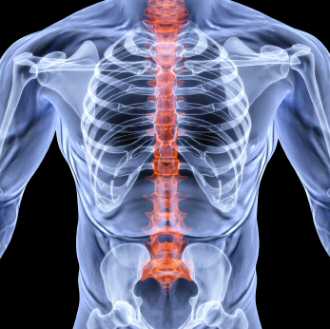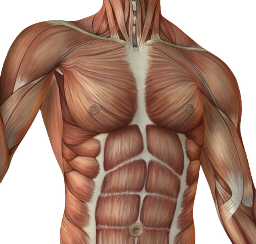The Haven
Healing Centre
The Orchard
Draycott Rd, Cheddar
Somerset

The Haven |

|
| Natural Complementary Therapies - your key to improved health and well-being | |
|
Home About Contact Gift Solutions Articles Treatments Products Page: 1 2 3 4 5 Appointments |
Treatment for Chest Pain or Rib DysfunctionSuffering from rib pain, rib dysfunction, chest pain or rib injury?One of the biggest problems associated with rib pain is the potential it has to create breathing dysfunction. Even shallow breathing can produce quite sharp pain which discourages us from breathing properly for our health. Assuming there is no reason why you shouldn't, give this a try for a second; place both hands on your ribs and take a deep breath. Just notice how much your ribs move out and up as your lungs fill. Do you think your lungs did that as they filled with air? Well that's not quite right. It is your ribs moving that allows your lungs to expand.  So when your ribs are not functioning normally, either through injury, pain, posture, connective tissue constriction, muscle strain, or habit, this has a detrimental effect on your ability to take in oxygen into your blood. You likely will find it hard to breathe, or painful to breathe.
So when your ribs are not functioning normally, either through injury, pain, posture, connective tissue constriction, muscle strain, or habit, this has a detrimental effect on your ability to take in oxygen into your blood. You likely will find it hard to breathe, or painful to breathe.How many breaths does a person take in one day? Since the average respiratory rate is 12-20 breaths per minute, each of us will take somewhere between 17,500 to 28,000 breaths in an average day. As the brain has determined and regulated the speed and frequency of our breath to fulfill the oxygen requirements of the body, it is reasonable to assume that any restriction in the respiratory efficiency of our lungs will have negative consequences for our health. Many people think of their ribs as immobile and equidistant from each other. But your ribs move everytime you breathe. In fact, you breathe because your ribs move. A typical human rib cage consists of 24 ribs, the sternum, costal cartilages, and the thoracic vertebrae. Ribs attach to your thoracic spine and at the front, at the breast-bone (sternum). The thoracic spine is made up of 12 thoracic vertebrae with 12 ribs on each side. An inhalation is accomplished when the muscular diaphragm, at the floor of the thoracic cavity, contracts and flattens, while contraction of intercostal muscles lift the rib cage up and out. These actions produce an increase in volume, and a resulting partial vacuum, or negative pressure, in the thoracic cavity, resulting in atmospheric pressure pushing air into the lungs, inflating them. An exhalation results when the diaphragm and intercostal muscles relax, and elastic recoil of the rib cage and lungs expels the air. The top seven ribs have two joints, one at the transverse process of the thoracic vertebrae (the spine) and one at the front attaching to the breast-bone (sternum). The next three also join at the spine, while the free end merges with rib seven. The last two ribs are only attached at the spine and nothing at the front and are therefore called floating ribs. All the joints are stabilised by ligaments and muscles. I quite often find that a patient will have pain in the thoracic part of the spine, where there may be excessive curvature (kyphosis), and the ribs that attach to the thoracic vertebrae. This applies also to patients with scoliosis. These are the areas under the most load and therefore strain. Muscles in the vertebrae and between the ribs can become fatigued, resulting in chronic strain of the supporting ligaments. Rib pain is often the result, causing, perhaps, shallow breathing, poor posture and core muscle weakness. Rib dysfunction is a mechanical problem affecting the joints between the ribs at either the thoracic spine or the sternum. Joints that do not move smoothly can become irritated, inflammed or stuck, causing tenderness, lack of mobility and pain. The pain, which is aggravated by movement, may be bad enough to affect your breathing or your sleep. The surrounding muscles can go into spasm and become very tender, and will have an impaired range of motion. There may be many reasons for your rib and chest pain, so get a proper diagnosis first Some of the common medical conditions that can cause rib and chest pain.

Pain around the ribs and breast area is common during late pregnancy, perhaps from around week 30. Mainly noticeable when sitting, due to the abdomen compressing the ribs, causing them to become tender and sore. This can be further agrivated by baby moving around. There are several things you can do yourself, such as attending to your posture during sitting, standing and walking. Treatment is available from The Haven Healing Centre, if you live nearby. Also, if you have backpain in pregnancy or, SPD or PGP, I may be able to combine treatments so as to address your rib pain and these other conditions in the same session. The aim of this treatment is to restore movement and reduce pain: If you are suffering with rib pain or think it's getting worse, or if your rib dysfunction has already become chronic, then the sooner you do something about it, the better. Factors that might make your rib pain worse are stress, poor posture, and lack of movement, disease or injury. Don't wait! The sooner we start treatments, the sooner you are likely to see improvement in your condition. If you live in any of the towns and villages in the list below, you are well within a 2-40 minute drive of The Haven Healing Centre, and I'd be delighted to help you to treat yourself for this condition. Please call Phil Chave on 01934 740275 to make your appointment or to talk about a treatment plan structured around your needs. Don't wait. Make your appointment today. You'll be glad you did! Please share this page with your friends. Thank you.
Note: DISCLAIMER: This information is not presented by a medical practitioner and is for educational and informational purposes only. The content is not intended to be a substitute for professional medical advice, diagnosis, or treatment. Always seek the advice of your physician or other qualified health provider with any questions you may have regarding a medical condition. Never disregard professional medical advice or delay in seeking it because of something you have read. It's a small investment in yourself, but could be a life-changing experience you will cherish forever. |
| Copyright © Philip Chave 2008- TheHavenHealingCentre.co.uk All rights reserved. Email: privacy |